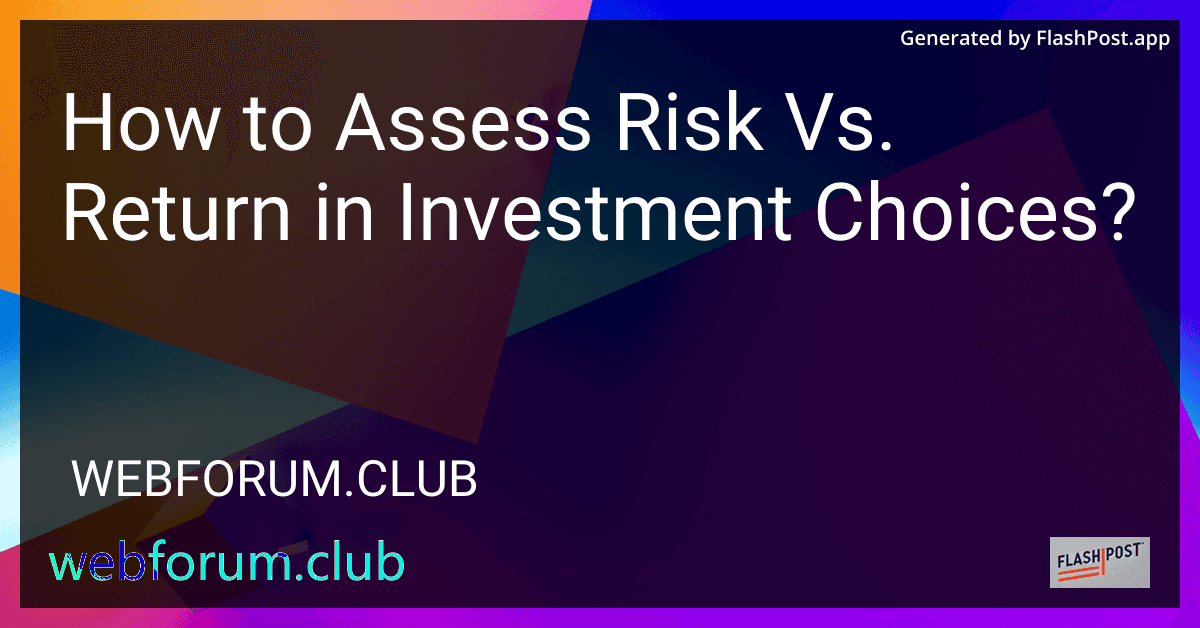Investing is an essential avenue for building wealth, but it is not without its complexities. One of the fundamental concepts every investor must grasp is the balance between risk and return. This dynamic plays a crucial role in aligning your investment portfolio with your financial goals. In this article, we will delve into the strategies for effectively assessing risk versus return in your investment choices.
Understanding Risk and Return
Risk refers to the possibility of losing some or all of your investment, and it is inherent to all investments to varying degrees. Return, on the other hand, is the gain or loss generated by an investment over a specified period. Returns are typically expected as compensation for taking on risk.
Types of Investment Risks
- Market Risk: The risk of investments declining in value due to economic developments or other events that impact the entire market.
- Credit Risk: The danger that the issuer of a bond or other debt security will not be able to make principal and interest payments.
- Liquidity Risk: The risk stemming from the difficulty of selling an asset without reducing its price significantly.
- Operational Risk: Risks arising from failures in internal processes, people, and systems.
Calculating Return on Investment (ROI)
Understanding how to measure return is a crucial part of assessing the viability of an investment. A common metric is the Return on Investment (ROI), which can be calculated as:
[ \text{ROI} = \left( \frac{\text{Gains from Investment} - \text{Cost of Investment}}{\text{Cost of Investment}} \right) \times 100 ]
Strategies for Balancing Risk and Return
-
Diversification: Diversification is a strategy that mitigates risk by spreading investments across various financial instruments, industries, and other categories. By doing so, it is possible to limit exposure to any single asset or risk.
-
Asset Allocation: Asset allocation involves dividing your investment portfolio among different asset categories, such as stocks, bonds, and cash. The allocation will depend largely on your risk tolerance, investment goals, and the investment time frame.
-
Due Diligence and Research: Thorough research and due diligence are paramount before making any investment. Understanding the potential risks and estimated returns through detailed analysis is essential.
-
Utilize Investment Strategies: Learning and applying various investment strategies can greatly aid in understanding the relationship between risk and return. Strategies can vary from conservative approaches for risk-averse investors to aggressive ones for those with a higher risk tolerance.
Further Resources for Crafting Your Investment Strategy
- Explore how to invest in uptrend stocks for potentially higher returns.
- Learn about investment strategies for a $100k portfolio aimed at protecting and growing your wealth.
- Discover methods on finding healthcare stocks for day trading, which can offer unique risk-return profiles.
- Beginners can explore investment strategies for $2,000, providing a low-risk starting point.
- Learn how to identify blue-chip stocks which are known for their stability and robust returns over time.
Conclusion
Assessing risk versus return is a critical component of savvy investing. By understanding your risk tolerance and conducting thorough research, you can make informed investment decisions. Utilizing a mix of diversification, asset allocation, and strategic approaches will help in optimizing the risk-return relationship in your investment portfolio.
Disclosure: The links in this article offer insights into different investment strategies and are provided for educational purposes.
